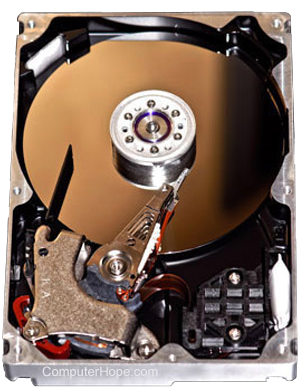Windows setup: compressed volume or disk-cache utility error
If you see the "compressed volume or disk-cache utility" error during the Windows setup process, review the troubleshooting options below.
Hard drive was compressed

If the computer hard drive was compressed in the past by any utility, it must be removed or configured to allow Windows. To remove the compression from the hard drive, follow the steps below.
Following the steps below erase all information on the hard drive.
- Boot from a bootable floppy diskette.
- At the A:\> prompt, type: fdisk and press Enter.
- In fdisk, choose the option to display partition information (option 4).
- Determine the system type currently set up on the hard drive. If you receive the message "No partition defined," skip to step 8.
- Once the system is determined, press Esc.
- Once at the fdisk main menu, choose the option to delete the partition or logical DOS drive (option 3).
- Choose option 1 to delete the primary partition if your system is FAT16 or FAT32. If your system was unknown or a non-DOS partition, choose option 4 to delete the non-DOS partition.
- Once the partition is deleted or is no longer present, choose "Create DOS partition or Logical DOS drive" (option 1).
- Choose "Create Primary DOS partition" (option 1) and create a primary partition on the hard drive. Once created, press Esc until back at the A:\> prompt. Once at the prompt, reboot the computer.
- Once back at the prompt after rebooting the computer, type format c: and press Enter.
- After the hard drive is formatted successfully, reboot the computer and install Windows.
Hard drive has unsupported file system, such as HPFS, NTFS, or FAT32
The version of Windows you are using may not support your hard disk's file system (FAT32, HPFS (high-performance file system), or NTFS (NTFS file system)) if it was formatted under a previous version of Windows. Resolve this issue by following the steps below.
Following these steps erase all information on the hard drive.
- Boot from a bootable floppy diskette.
- At the A:\> prompt, type fdisk and press Enter.
- In fdisk, choose the option to display partition information (option 4).
- Determine the system type currently set up on the hard drive. If you receive the message "No partition defined," skip to step 8.
- Once the system is determined, press Esc.
- At the fdisk main menu, choose the option to delete the partition or logical DOS drive (option 3).
- Choose option 1 to delete the primary partition if your system is FAT16 or FAT32. If your system was unknown or a non-DOS partition, choose option 4 to delete the non-DOS partition.
- Once the partition is deleted or is no longer present, choose "Create DOS partition or Logical DOS drive" (option 1).
- Choose "Create Primary DOS partition" (option 1) and create a primary partition on the hard drive. Once created, press Esc until back at the A:\> prompt, and then reboot the computer.
- Once back at the prompt after rebooting the computer, type format c: and press Enter.
- After the hard drive is formatted successfully, reboot the computer and install Windows.
Hard drive has DDO
If you have installed your hard drive using a DDO (disk drive overlay), the computer may not see the shard drive using a bootable diskette.
To determine if you're using a DDO with a bootable diskette, reboot it without any bootable diskette or CD (compact disc) in the computer. As the computer is booting, you'll receive a message "Press *key sequence* to boot from a bootable diskette." The *key sequence* can vary depending on the DDO installed on the computer. An example of such a key sequence is Ctrl+Esc. If you do not see this message when your computer is booting, DDO is likely not installed on the computer.
